Rare Edward III gold coins found in Hambleden hoard
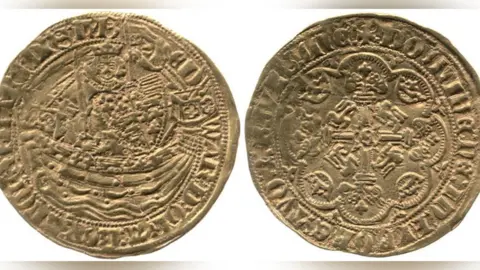 The British Museum
The British MuseumA coin expert said his eyes lit up when he saw 12 "rare" medieval gold coins, discovered with 616 silver pennies hidden in the wake of the Black Death.
The hoard was found during a metal detecting rally at Hambleden in Buckinghamshire in April 2019.
British Museum curator Barrie Cook said there had been only 12 known examples of the 1346 and 1351 Edward III gold nobles before the 2019 finds.
The coins have been declared treasure by Buckinghamshire Coroner's Court.
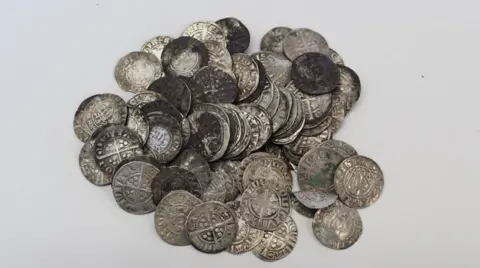 The British Museum
The British MuseumDr Cook, curator of medieval and early modern coinage, said: "They are rare coins and your eyes light up when see something rare, and there's the whole background of the Black Death - it's a very active decade, to put it mildly, with a lot of historical context to unpack."
The Hambleden nobles were the third attempt by Edward III to introduce the first gold coinage to England since the Anglo-Saxon era.
It was not until the fourth attempt that "the mint people worked out" the right relationship between the value of the silver pennies and gold coins, he said.
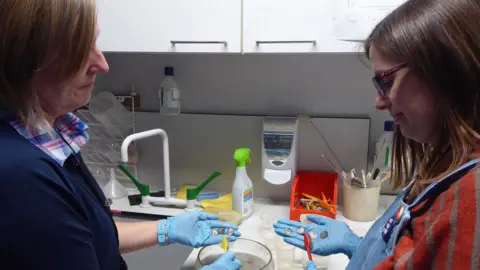 The British Museum
The British Museum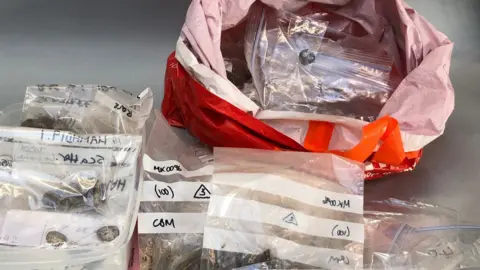 The British Museum
The British MuseumThe hoard was unearthed by seven detectorists during Spring Detectival 2019, as first reported by the Bucks Free Press.
Dr Cook said the pandemic delayed identification, while he was also faced by the puzzle of whether he was looking at two separate hoards - one of gold coins and one of silver - and "until I look at them in detail, I couldn't make that judgement".
He is now convinced the same "poor bloke or woman - it could have been a woman - put this very large sum of money in a hiding place and couldn't go back to it, so probably died".
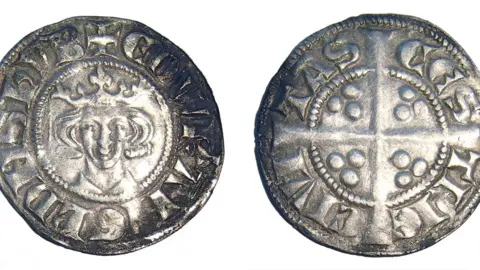 The British Museum
The British MuseumThe Black Death reached England in 1348 and it killed at least a third of the population.
The hoard was deposited in two phases. First the silver coins, the latest of which was issued in the mid-1320s, and later the nobles were added.
Dr Cook said "people hid their money all the time as there were no banks" and the owner was probably local.
"He might be an official running a manor or a priest, but he's not super rich either as the super rich didn't bury their money," he said.
It was worth about £6, at a time when the king's officials had set Hambleden's entire tax assessment for a year at £5.
The hoard will now go to the Treasure Value Committee to determine its value.

Find BBC News: East of England on Facebook, Instagram and Twitter. If you have a story suggestion email [email protected]
